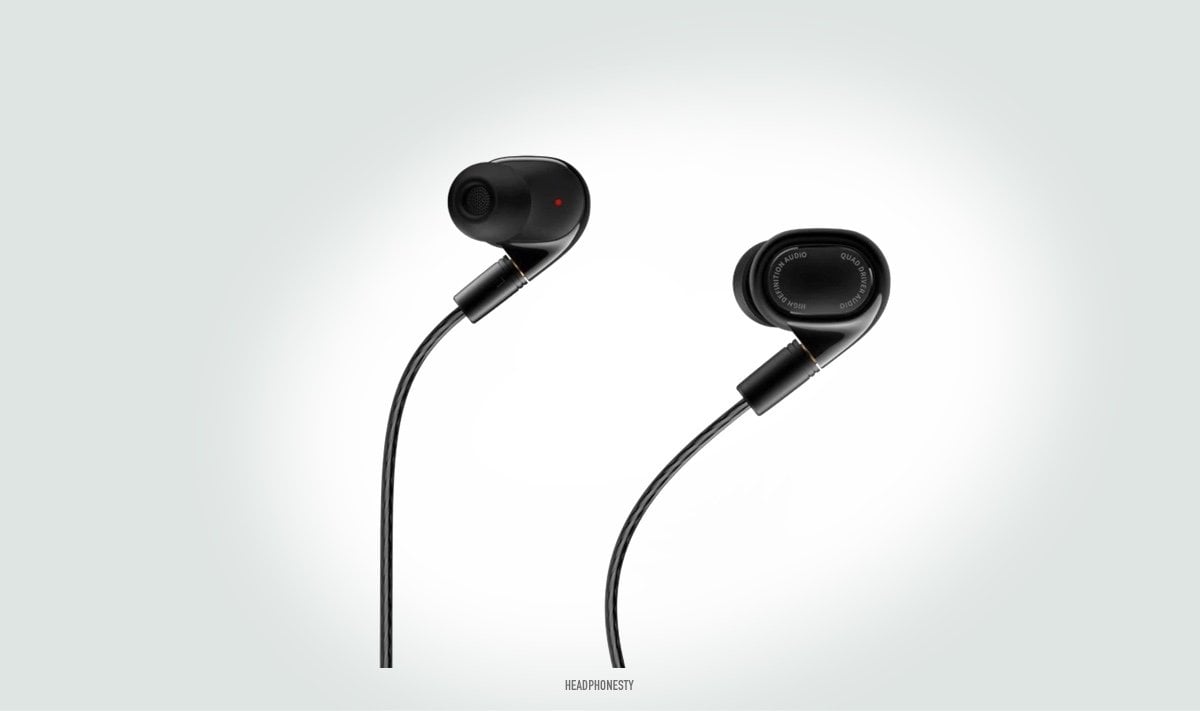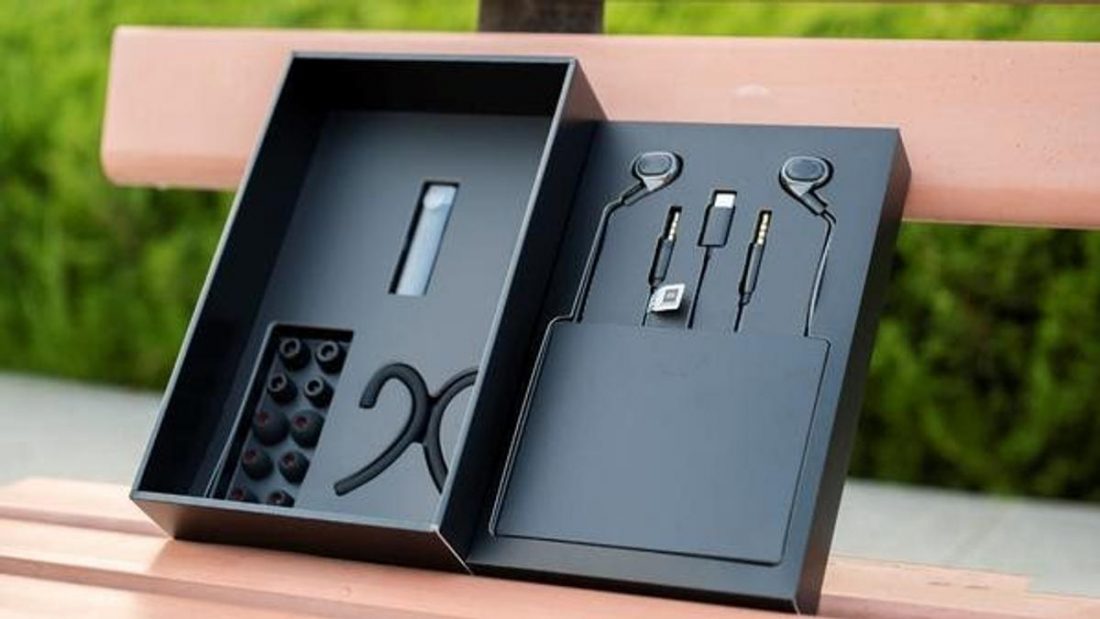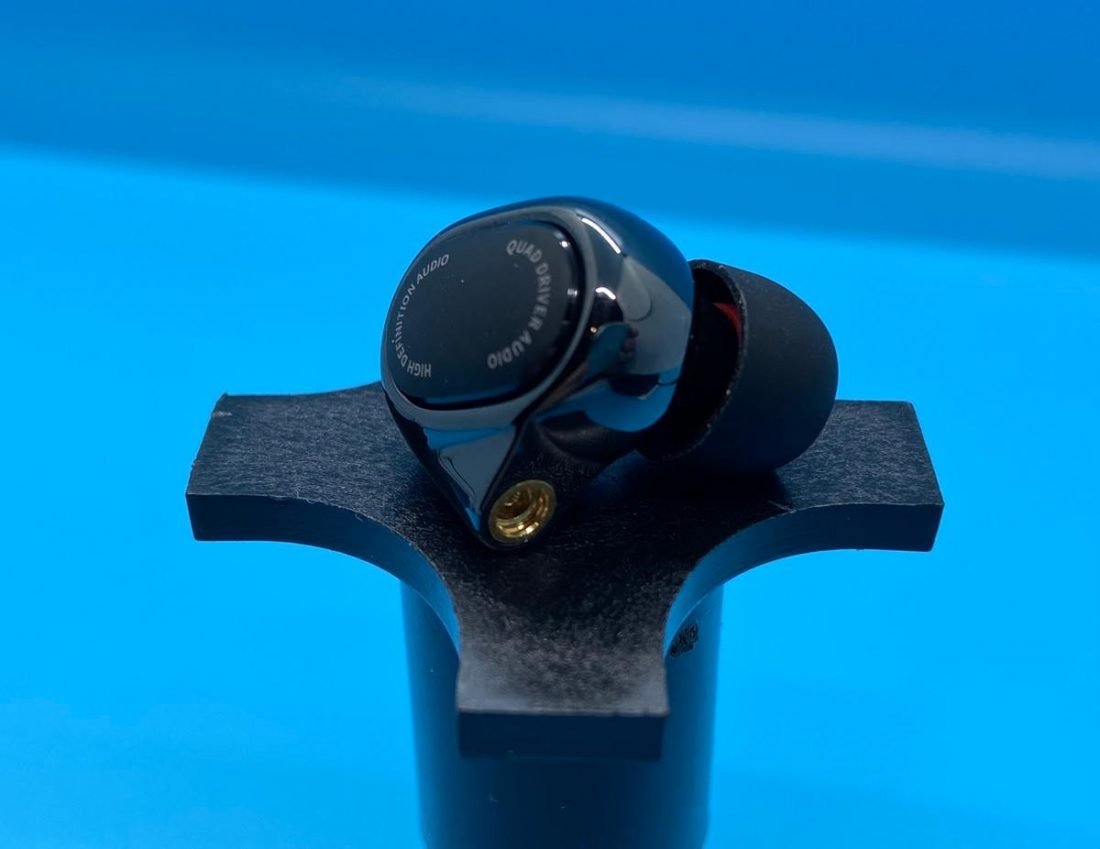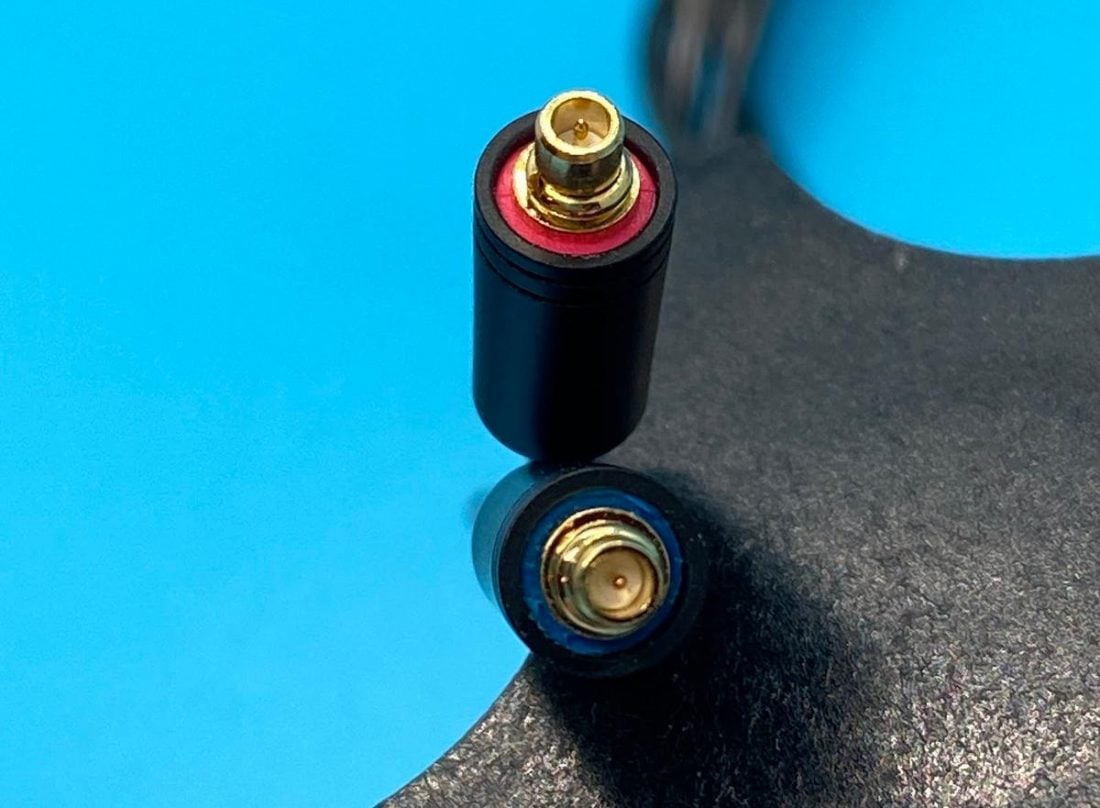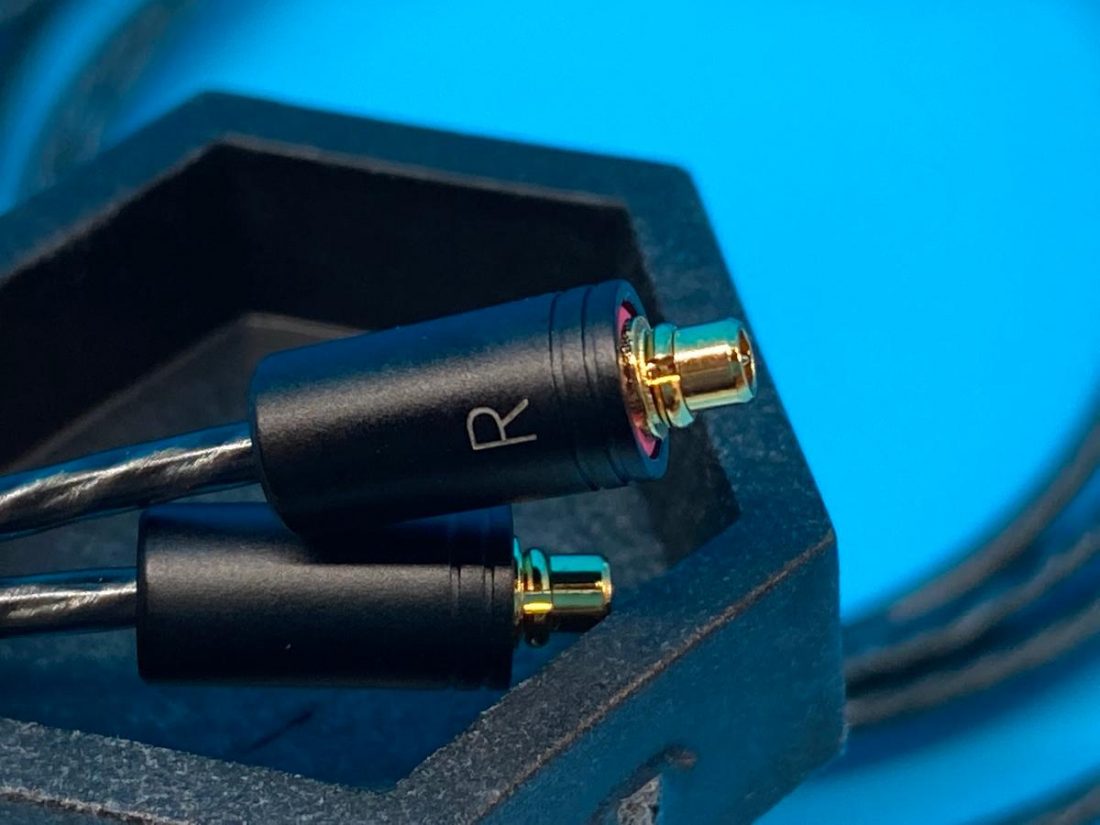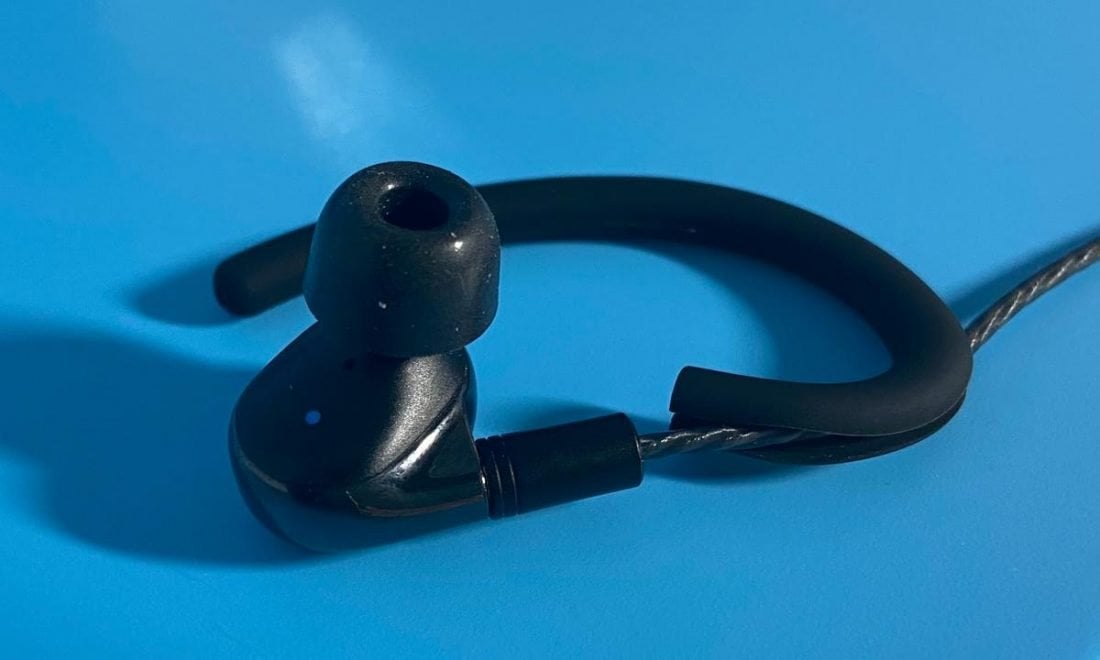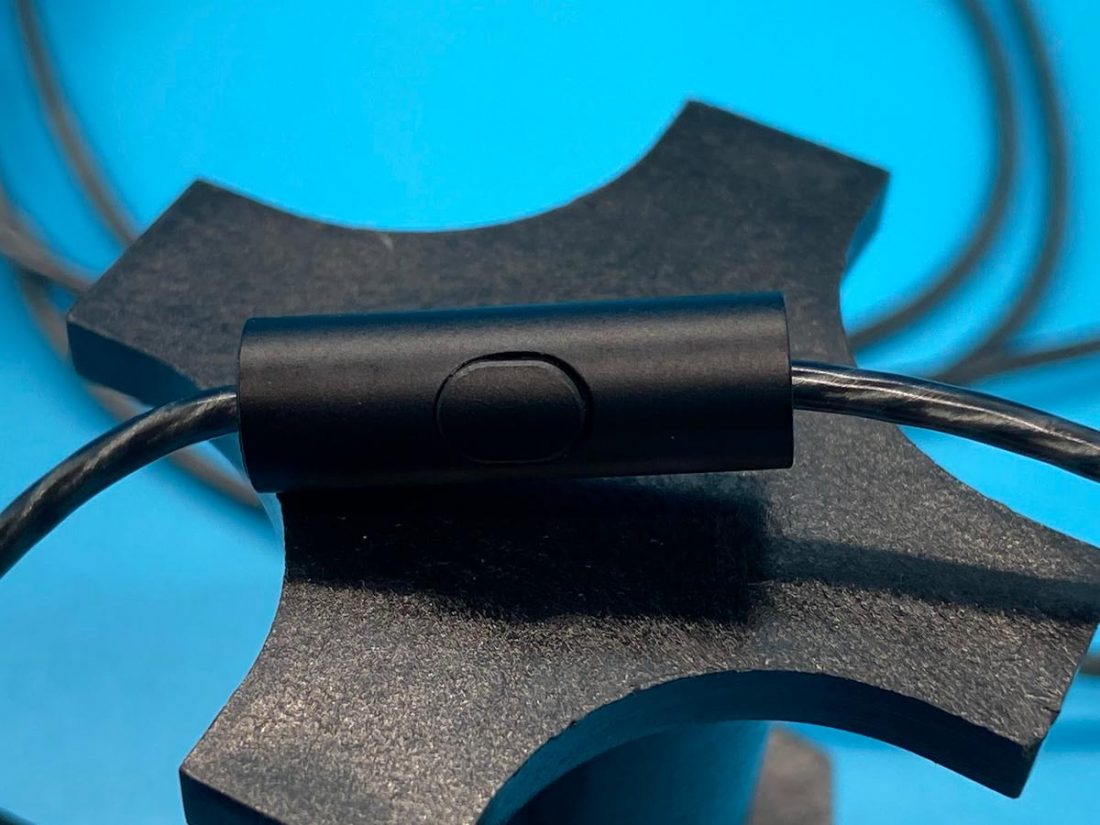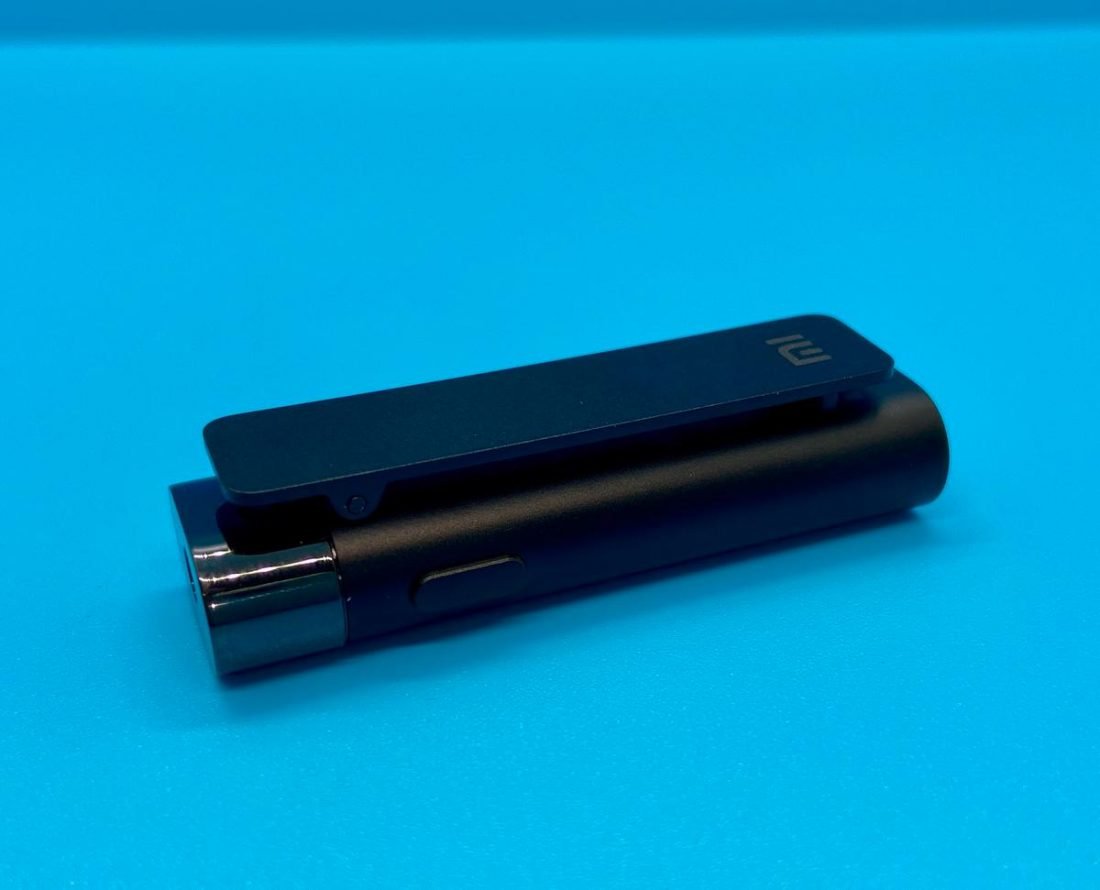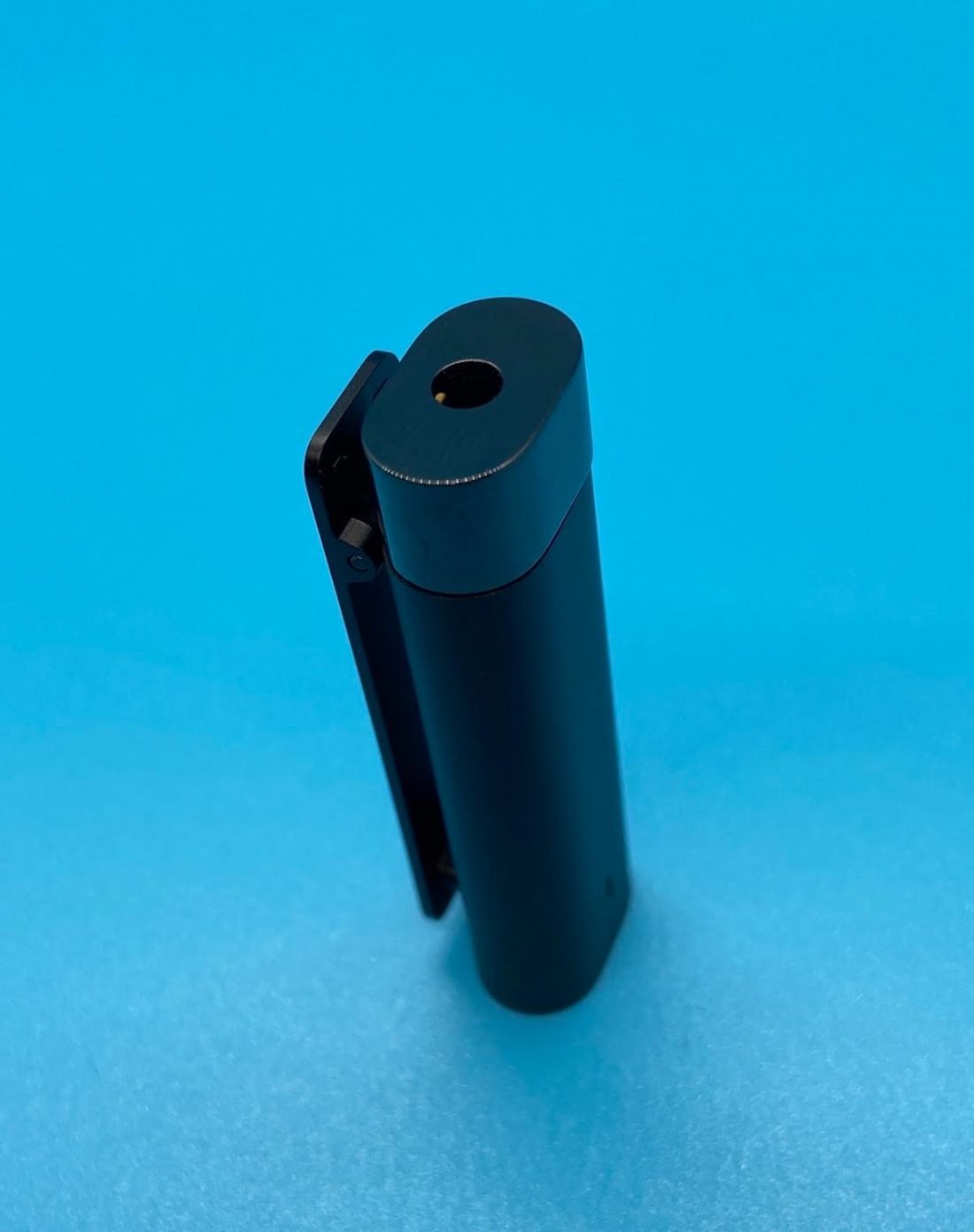The Xiaomi HIFI Hybrid (Mi Quad) will appeal to those who are looking for solid physical characteristics, such as Zirconia, Bluetooth (BT) independence, and above-average sonic performance in the price range of USD$200. To my knowledge, these are the first earbuds to provide LDAC (SONY) compatibility. The BT module, a separate device, provides the best sonic quality of any unit I have tested. Audibly, it features sonic performance that is equal to straight audio plug into older iPhones so equipped without LDAC.
Initial Impressions
The packaging is impressive, consisting of a high-quality black box that arrives in sealed skin. The lid has an engraved Mi Quad earpiece and cord in the shape of a Nautilus Motif decorating the shell. As you open the lid, you discover the detailed packaging of each component. The charging cord and manual are located in the removable tray at the top. I found the manual to be well written, in both Chinese and English, and with good illustrations. Included in the box:
1 pair of Zirconia (2BA+2DD earbuds) 1 x 3.5mm audio jack cable 0.5 meter (19”) long with heavy gold plated MMCX connectors. Integral phone control switch. 1 x 3.5mm audio jack cable 1.5 meter (54”) long with heavy gold plated MMCX connectors. Integral phone control switch. 1 x Type-C 1.5 meter (54”) audio cable with DAC chip and heavy gold plated MMCX connectors. Integral phone control switch. 1 x Bluetooth adapter supporting Hi-res LDAC 4 pairs of silicone ear tips plus one pair fitted to earbuds 2 pairs of memory sponge ear tips 1 pair of slip over-ear hooks 1 x spring close headphone case 1 x USB to Type-C 833mm (33”) charging cable 1 x Chinese-English Illustrated user guide
Physical Qualities
Mi Quad Earbuds
The earbuds are solid and a little on the heavy side compared to others, but their weight, finish and feel exact a very impressive quality and confidence in longevity. Eartips and connection methods are as standard as most in the industry. The MMCX (micro-miniature coaxial) connectors are reported to be heavily gold plated and last four times longer than other comparable connectors. I like MMCX connectors because they give you the freedom to use cables and Bluetooth adapters between different products. This contributes to its usefulness for review comparisons.
Fit
I didn’t find these to be a comfortable fit for my ears, and I experienced difficulty using the ear hooks. I used them for a few weeks but never fully adjusted to them.
Material
The black enclosure and sound chamber are made from Zirconia, a white crystalline oxide of zirconium. Its density may contribute to accurate sound. This is a very tough material; it’s four times stronger than stainless steel. And its single crystal form is cubic zirconia – synthetic diamonds. I suspect you will not find tougher earbud cases anywhere. They look great! The ear tips are a common assortment of materials and sizes. I never quite got something that just “clicked” with me and I suspect that it is the physical design of the bud itself. On the negative side, this diamond-like material seems to conduct exterior noise instead of absorbing it. For comparison, I tried the same environment (flying in a commercial jet) with both the zirconia Mi Quads and the Egger resin Peacock P1s from a previous review. The P1s had only slight background noise whereas the Mi Quads had little bass as it was drowned out by the background noise.
2BA+2DD Element Layout
These earbuds feature a slightly complex design – two balanced armature (BA) units that are great for highs and upper mid-range, integrated with two dynamic elements better for low and mid-range. Although I lack clear information, I suspect this configuration is coaxial and similar to the patented technology of the Mi In-Ear Headphones Pro. The net result is high-resolution sound quality complying with the standards of the JAS (Japan Audio Association) and the CEA (Consumer Electronics Association), certifying that these earbuds are Hi-Res.
Cables and Connectors
All of the audio cables feature oxygen-free silver-plated copper. The cables are smooth, small in diameter, and non-tangling. There is a great selection of cables. They provide both long and short audio cables for use wearing the BT adapter on the waist or around the neck. Also included is Type-C for with internal DAC for direct connection. None of these cables work with current models of iPhones. The cable has a basic push button switch for phone connection and track changing. One weakness is that there is no volume control for use with the push button on the cords or BT adapter. Xiaomi provides a nice, fleece-lined, spring closure carry pouch. The pouch has a pleasing external textured finish and is sized perfectly. I prefer this rather than a box to put in my pocket. From the connectors to the earbuds, all are thick plated gold and MMCX style. Efficient and fast connection and disconnection are consistent with all cables and earbuds, indicating good quality machine work. The slip over-ear hooks fall far short of the others I have used that have integral wires forming a springy hook. Its low quality will turn out to be a weak spot for frequent users wanting an over the ear format. During use, I found that the ear hooks moved easily and changed alignment but never fell off. An ear hook serves the function of not only relieving the load of the cable on the earbud by hanging over the ear but also keeping the earbud in alignment with the ear canal. These fail in the alignment area. A simple switch for call and track control is included on the right ear cord. Sadly, it’s missing a volume control function. At least the functions it does have work exactly the same as the duplicate functioning button on the BT adapter. There are no specifications or claims in the features as to the sweatproof IPX4 rating found on competitive devices. It would be nice to know where these stands. But there is a port vent and the BT adapter has clear openings without evidence of seals.
Bluetooth Adapter
This is a great feature and represents one major strength of this product. There are no specifications listed for frequency response of either the earbuds or the BT adapter. But actual use indicates that the BT adapter does meet audiophile listening standards for use with iPhones and similar devices. I found the audio quality to be the best of any BT device I have used, but transmission strength is average. The HIFI Hybrid is a BT 5.0 compliant device. It’s run time is conservatively eight hours at 50% volume and two hours charge time. My experience seems to support these specifications after two weeks of frequent use. The status LED is bright but has a narrow viewing angle and changes color for different conditions. The buttons support the same functions as the pushbutton switches on the cables. This module is rather heavy for its size. I suspect that’s due to the battery size and solid construction. One end has a standard 3.5mm audio jack and the opposite end has a Type-C charging port. On the side is a button for turning on, connecting, and turning off the adapter. On the side is a study spring clip for attaching to objects and clothing that looks and feels very solid. The receiving audio was excellent. Talk time is estimated at about two hours of continuous use before recharge. I recommend this product if not just for the BT sound quality.
Technical Specifications
Earbuds/Headphone:
Connectivity type: 3.5mm Audio jack or Bluetooth 5.0 Driver unit: Dual balanced armature and dual dynamic elements Sensitivity: unknown Rated impedance: 32Ω Frequency response: unknown Wearing method: hanging ear or lower direct Shell material: Black Zirconia Weight: 7gms each without ear tips
Cable:
Conductor material: silver plated copper Number of cores: unknown Wire length: 0.5m and 1.5m Earbud Connection type: MMCX heavy gold plated Source Connection type: 3.5mm and Type-C (integral DAC)
Bluetooth Adapter Module parameters:
Bluetooth chip: unknown Bluetooth version: 5.0 Transmission distance: 10 meters barrier-free Bluetooth profiles: HFP/A2DP/HSP/AVRCP, LDAC Compatible Battery capacity: unknown Use time: 8-10 hours Charging time: 2 hours Charge port: Type-C Input Voltage: 5VDC, 1A Weight: 13gms Waterproof Rating: unknown
What I would like to see physically different
Sound Quality
Now we get to the most important thing to consider when purchasing IEMs. By definition:
Listening equipment and criteria
This review is targeted at what I believe is the market for BT IEMs which is audiophile BT with phone capabilities. An attempt will be made in headphone-device comparisons to emphasize warmth and listening pleasure over detail. The sound portion of this review relies on the most commonly used source devices by this market and the media source. I did not use any special pre-conditioners, preamps, DACs, or high-performance comparison devices. For evaluation, I used an iPhone 11 (BT), iMac 27” 2019 (direct audio jack, BT and TYPE-C with DAC) and also and iPhone 6+ (direct audio jack) to be fair to those with older equipment eliminate advances in the DAC performance in the 5-year development history. All decisions were made after approximately 20 hours of listening experience. For comparison to other IEMs, I used the Tin HiFi T3 purchased in August 2019. This has proven to be better than any other IEMs I own and meets my listening criteria. It is also the best detailed IEM with great soundstage, detail, and crispness. For my source of media, I used Spotify set to “Very High” quality (320 kbits/sec) with no equalization or other settings in both Spotify settings and on the iPhone’s/iMac audio settings. The internet feed is 200+ Mbps. I did not have the means to test LDAC performance but other reviews seem to correlate that LDAC below 900 kbits/sec is worse than other methods at (320 kbits/sec). For listening tracks, I used mainly my favorite test tracks from:
Connection: With Bluetooth and Audio Cable
I found there was no significant difference between the iPhone 1, iMac and the iPhone 6+ using the BT module which surprised me and I was unable to find any DAC specifications on either the iPhones or the BT Adapter for comparison. If anything the iPhone held a very slight edge on the iMac. I was pleasantly surprised by how excellent the BT performance was. The detail was present, including soundstage, clarity, and performance was the same as direct 3.5mm audio connection on iPhone 6+ but much better than the iMac. Amazing. Possibly the integrated DAC was upgraded to support LDAC specifications and meet HI-RES certification. The iMac, however, had terrible direct audio by comparison. I could compare results with the Tin HiFi T3 3.5 mm audio jack using the MiQad BT Adapter, iPhone 6+ and iMac. I found the sound smooth throughout the spectrum. However, comparing with the Tin Hifi T3 indicated the following differences. This device sounds good and has a comfortable quality without any non-uniform volume differences. It flows and has sweetness. It has clarity, detail, no trace of sibilance.
Bass range
No muddling and well balanced. These are not for Bass-heads. The bass is mild in the upper end and comes to life in the lower end. I suspect the dynamic element is lower end biased. The lack of punch with accurate reproduction – rapid drum sequence with transition from low to high quickly and overlapping – is missing something from handover of elements between Dynamic and Armature…like crossovers in speakers. Don’t get me wrong the transition is smooth and sounds good but it is missing detail the contributes to punch due to transfer of energy between elements.
Middle range
This is a range where I believe there is a challenge. The middles are there and accurate but they disappear to the back of the sound stage and tend to be overpowered by the bass on one side and the treble on the other. They are not muddled but seem to play a secondary role.
Treble range
This range is like the bass performance which surprises me as one would expect this area to be the weakest considering the emphasis is on bass performance. There are good soundstage and presence. Clarity and detail are good. Usually, this range contributes are creates dimension. Here the sound stage is flatter than on a normal IEM. What is missing is the detail on complex highs such as a brush on a snare drum…the hashy sound is there but not the detail of the sound of wires. Yeah, I know that sounds picky and imaginative but it is something that provides realism. This seems to be common on most in-ear devices.
Soundstage
The Mi Quad has a nice listening soundstage. It really gives satisfaction from the dimension of the ambiance it creates and entertains you. Most music I listen to tends to have bass leaning on the left and treble on the right. The soundstage here is flatter with less depth than the T3 but at the same time, it is sonically well blended and comfortable without sacrificing sound quality.
Multi-Element Design Considerations
The challenge in multi-element designs is that one has different frequencies allocated to different physical elements. Sweeping frequency sounds need to move from one element to another while maintaining the same sound energy…a real challenge. The goal is to pack great sound in a small device and that is the intent in the Mi Quads. They have done well and any inaccuracies in the transitions have to be listened to and looked for as they are not obvious. This becomes clear with listening to the reference tracks. Track 1 has busy sections with complex combinations of instruments where the transition is more noticeable. Track 2 leans to slow transitions and predominant bass. This later track sounds great!
Connection: TYPE-3 with Integral DAC
My only means to test with this was the iMAC. I used 96kHz 32bit Float and 48kHz 32bit Float MIDI out. I found the sound just was not up to the other options…including BT. I suspect the integral DAC is the problem. I did not bother to test extensively with this device.
Why I Compare with Tin T3
I choose to compare with the Tin HiFi T3 since I consider these a good audiophile standard in the low price range of USD$65. They are studio monitor quality. If you like detail, accuracy, a flatter range of linearity, crystal clear sound from bass to high then these make a good reference. They are for critical listening and not casual listening. They are heavy and do not allow a lot of movement. The Tin HiFi T3 is a reference that anyone can afford but keep in mind that bass is not as pronounced so using it for judgment in this range is limited. The T3 has a better mid-range and excels in its highs. It is for critical evaluation where one is concentrating on the sound and not casually listening. Lose concentration and you may find them harsh.
Conclusion
I believe you can’t go wrong with buying the Xiaomi Mi Quad Headphones because they provide such a pleasurable listening experience with accurate, yet comfortable sound. The BT adapter is excellent for listening and supports audiophile listening potential and can be used with other sound devices when desired. I wish to thank HiFiGo for providing an evaluation unit. They are an excellent purchase source.
